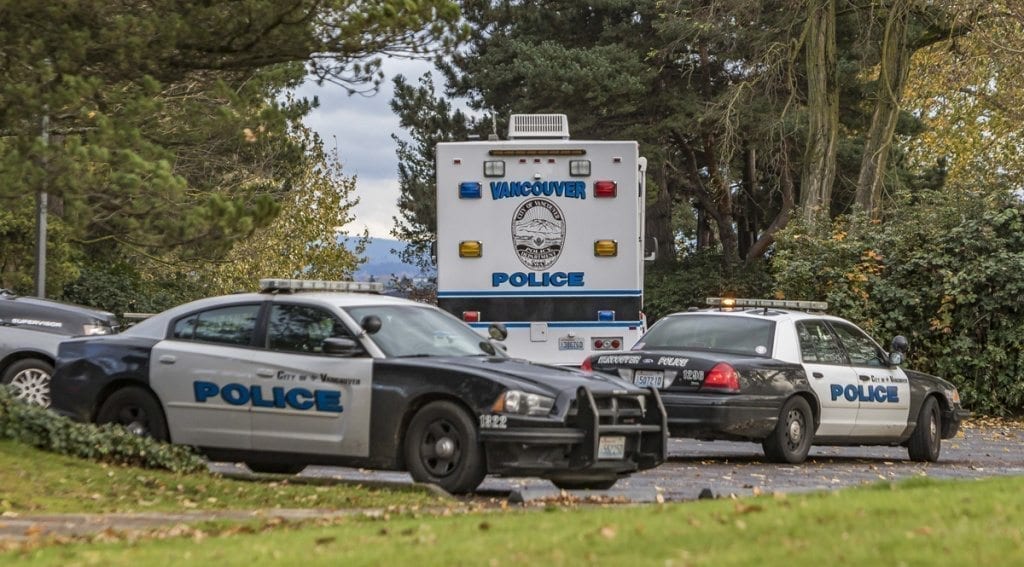VANCOUVER — With a growing population, more calls for police services every day and staffing levels that still aren’t up to pre-recession levels, the Vancouver Police Department is feeling the strain.
To identify gaps in police services and recommend solutions, Vancouver leaders formed a Community Resource Team (CRT) in April of 2016.
The city asked the 19-member team, which included the mayor, two city councilmembers and 16 community members, to review current police trends, resources and service levels in Vancouver and come up with “a multi-year, sustainable funding strategy that provides increased funding for [police] staff, technology, equipment and facilities.”
The only catch? The funding sources could not rely on reductions from other general revenue expenditures. In other words, said Lynn Marzette, a member of the CRT, the group couldn’t ask the city manager and city council to “rob Peter to pay Paul.”
“Our guiding principles for revenue generation were that it would supplement, not supplant,” Marzette told city councilors on Mon., Dec. 12, during the Vancouver City Council’s work session. “It also had to be equitable, stable and sustainable.”

The CRT met nine times over the past eight months. During that time, they tried to understand the city’s budget process, surveyed community members to gauge Vancouver residents’ thoughts on their city’s police force, and delved into Vancouver Police Chief James McElvain’s plan to increase police staffing levels over the next four years.
On Monday evening, team members came to the Vancouver City Council’s work session to outline the group’s recommendations. Among them: Approve recommended new revenue sources for police staffing; fund an additional 34 sworn police officers and 15 civilian police department employees by 2020; and start a public process to address the city’s ongoing structural deficit.
“When you look at the survey, it becomes very clear that people are not satisfied with the police services today,” CRT member JD Schutte told the councilors. “Most were neutral or dissatisfied, or they ‘didn’t know,’ which is not good. Citizens should be satisfied with the Vancouver Police Department’s services.”
In the community outreach efforts, CRT members say they heard from the public that the police department needed to do a better job with property crime investigations, traffic enforcement, police outreach programs and police visibility in the community. The top concerns cited by a majority of residents surveyed included property crimes, violent crimes, drug-related crimes and traffic violations.
A vast majority of the respondents — 80 percent — said hiring more police officers would “probably or definitely help address their concerns.”
To meet the community’s policing needs and become a proactive police force that isn’t simply responding to calls, but is actively trying to prevent crime throughout Vancouver and enhance the police department’s relationship with the community, Police Chief McElvain says his department needs to dramatically increase its staffing levels — going from 198 sworn officers to 232 sworn officers and from 47.5 civilian employees to 62.5 civilian employees by 2020. The increase means the city of Vancouver would need to bring in an additional $12.5 million in revenues.
“The Vancouver Police Department gaps are due to staffing cuts made during the recession, population growth and the fact that city revenues have not kept pace with inflation,” Marzette told city councilors on Monday.
He added the police force has 15 fewer officer than the Vancouver Police Department had before the 2008 recession and eight fewer civilian employees. Add that to a population base that is growing by about 3,000 people each year, and it’s tough for officers to do anything except respond to calls all day long.
“It is becoming pretty overwhelming for the Vancouver Police Department to cover all the bases that the CRT determined were necessary,” Marzette said.
To fund the police chief’s request for more sworn officers and civilian employees, the CRT came up with a plan that all 19 members could agree on. The funding scheme, which includes marijuana taxes, a three-year federal COPS grant, slight increases in existing city revenue sources such as the utility excise tax, and taxes based on square-footage assessments for multi-family housing as well as retail/commercial/industry businesses.
A minority of the CRT group wanted to see the city reintroduce the business and income (B&O) tax, which the city got rid of in 1993.
The recommendation that city councilors will consider in early January, does not include a B&O tax, but that’s not to say that city leaders won’t reconsider it for longer-term revenue sources to pay for critical city services like Vancouver’s police and fire departments.
“There was no perfect solution, but the CRT, after a lot of really in-depth conversations, came up with what we think is a really good plan for the interim,” Schutte told the councilors on Monday.
The Vancouver City Council will discuss the matter at their work session on Mon., Jan. 9, and could have a first reading on the CRT’s list of recommended revenue streams. If so, a public hearing on the revenue sources and funding strategies for increasing police services would likely be held at the council’s Mon., Jan. 23 regular council meeting.




